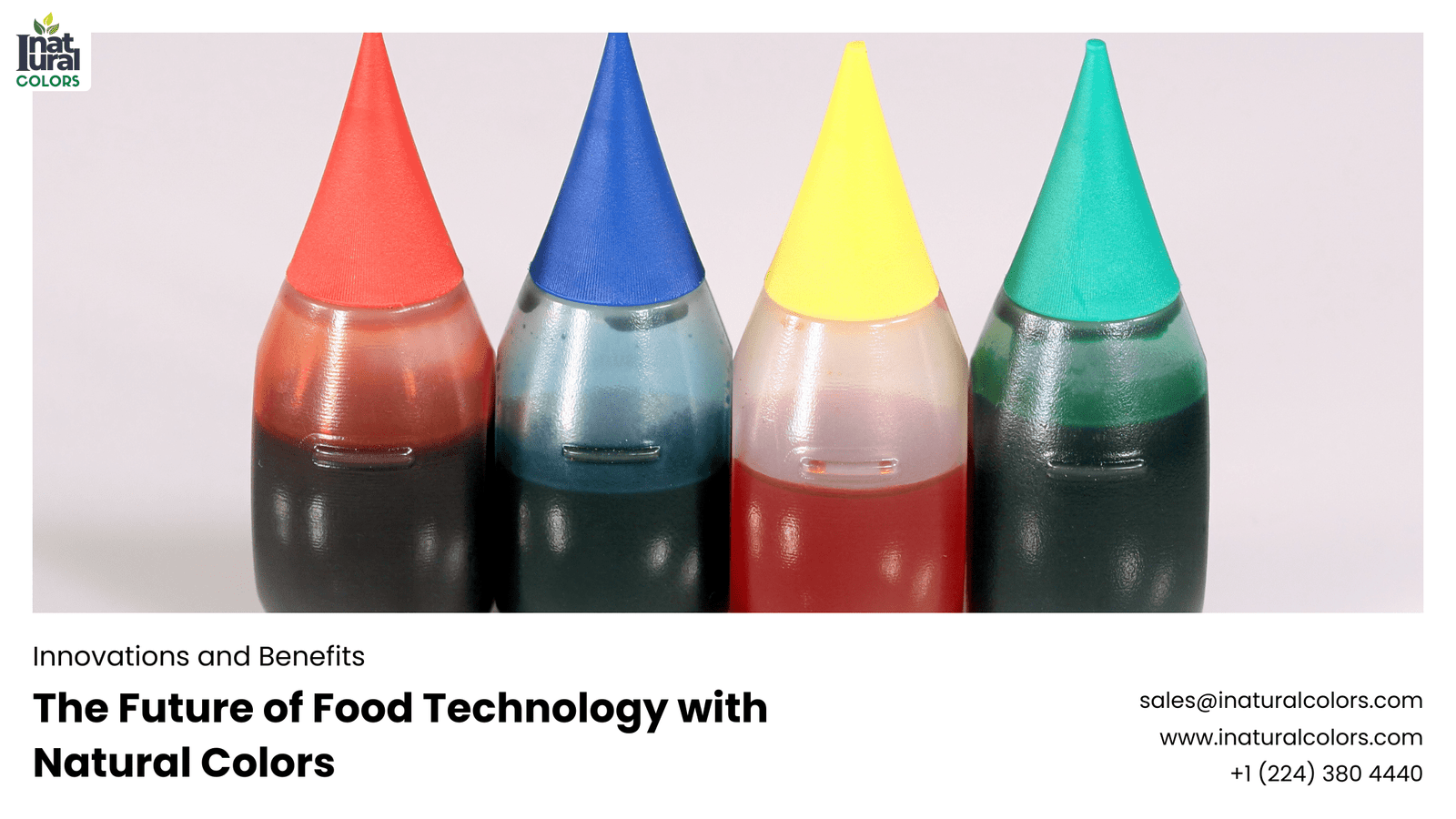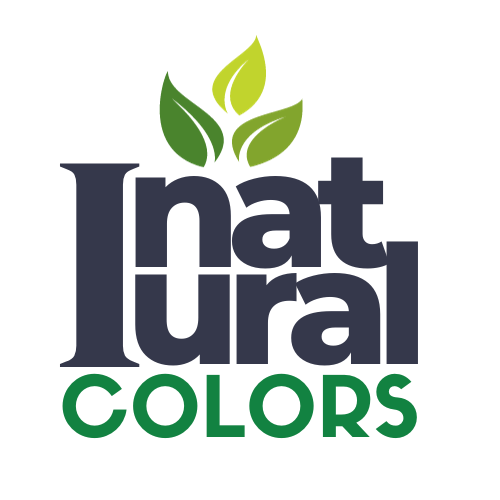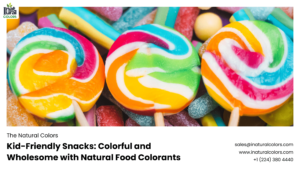Beautiful Plants For Your Interior

Outline
- Introduction
- Importance of Color in Food
- Transition to Natural Colors
- Historical Context of Food Coloring
- Early Use of Natural Dyes
- Shift to Synthetic Colors
- Modern Movement Back to Natural Colors
- Why Natural Colors Matter
- Health Benefits
- Consumer Preferences
- Environmental Impact
- Sources of Natural Food Colors
- Plant-Based Colors
- Animal-Derived Colors
- Mineral-Based Colors
- Innovative Extraction Techniques
- Cold Press Extraction
- Solvent Extraction
- Supercritical Fluid Extraction
- Challenges in Natural Food Coloring
- Stability and Shelf Life
- Color Intensity and Consistency
- Cost and Scalability
- Technological Advances in Natural Colors
- Biotechnology and Genetic Engineering
- Nano-Encapsulation
- Improved Formulation Techniques
- Applications in the Food Industry
- Beverages
- Confectionery
- Dairy Products
- Savory Foods
- Regulations and Standards
- FDA Guidelines
- EU Regulations
- Global Standards
- Case Studies of Success
- Big Brands Going Natural
- Startups Innovating with Natural Colors
- Future Trends in Food Coloring
- Personalized Nutrition
- Sustainable Sourcing
- Integration with Other Food Technologies
- Consumer Education and Awareness
- Importance of Transparency
- Educating on Benefits
- Addressing Misconceptions
- Market Analysis and Growth
- Current Market Size
- Predicted Growth Trends
- Key Players in the Market
- The Role of AI and Machine Learning
- Predictive Analytics for Color Stability
- AI in Consumer Preference Analysis
- Conclusion
- The Road Ahead for Natural Food Colors
- Final Thoughts
- FAQs
- What are the main benefits of natural food colors?
- How are natural food colors extracted?
- What are the challenges associated with natural food coloring?
- Are natural food colors more expensive?
- What is the future of food technology with natural colors?
The Future of Food Technology with Natural Colors
Introduction
When it comes to food, what’s the first thing that catches your eye? The color, right? Whether it’s the vibrant red of a ripe strawberry or the golden yellow of a fresh mango, color plays a crucial role in our perception of food. Traditionally, artificial colors have been used to enhance the visual appeal of food products. However, there’s a growing shift towards natural colors in the food industry. This transition isn’t just a trend; it’s a movement towards healthier, more sustainable eating.
Historical Context of Food Coloring
Early Use of Natural Dyes
Long before synthetic dyes were a thing, ancient civilizations used natural ingredients to add color to their food. Think turmeric for yellow, beetroot for red, and saffron for a rich golden hue.
Shift to Synthetic Colors
With the industrial revolution came synthetic dyes. They were cheaper, more stable, and provided a wider range of colors. But over time, concerns about their safety and health impacts grew.
Modern Movement Back to Natural Colors
Today, there’s a resurgence in the use of natural colors. Consumers are more health-conscious and environmentally aware, pushing the food industry to rethink its use of synthetic additives.
Why Natural Colors Matter
Health Benefits
Natural colors come from fruits, vegetables, and other organic sources. They often carry additional health benefits, packed with antioxidants and vitamins that are good for you.
Consumer Preferences
Consumers are becoming more label-conscious. They prefer products with clean, recognizable ingredients. Natural colors appeal to this growing demand for transparency and healthiness.
Environmental Impact
Synthetic dyes often involve chemical processes that can harm the environment. Natural color production, on the other hand, tends to be more sustainable and eco-friendly.
Sources of Natural Food Colors
Plant-Based Colors
Plants are the most common source of natural colors. Carrots, spinach, berries, and even flowers are used to derive vibrant hues.
Animal-Derived Colors
Some natural colors come from animals, like cochineal extract, which is made from insects and used to produce a red dye.
Mineral-Based Colors
Certain minerals, like iron oxide, are used to create natural colors, particularly in confectionery and baking.
Innovative Extraction Techniques
Cold Press Extraction
This technique involves pressing plants at low temperatures to preserve their color and nutritional content.
Solvent Extraction
Here, natural solvents are used to extract colors from raw materials, ensuring a high yield of vibrant pigments.
Supercritical Fluid Extraction
This cutting-edge method uses supercritical fluids to efficiently extract and purify natural colors, enhancing their stability and usability in foods.
Challenges in Natural Food Coloring
Stability and Shelf Life
Natural colors can be less stable than synthetic ones. They might degrade over time or with exposure to light and heat.
Color Intensity and Consistency
Achieving the same intensity and consistency of color can be challenging with natural dyes, which can vary depending on their source and processing.
Cost and Scalability
Natural colors can be more expensive to produce and harder to scale up for mass production compared to their synthetic counterparts.
Technological Advances in Natural Colors
Biotechnology and Genetic Engineering
Scientists are using biotech to enhance the color-producing capabilities of plants and microorganisms, leading to more vibrant and stable natural colors.
Nano-Encapsulation
This technology involves encasing natural color molecules in tiny capsules to protect them from degradation and improve their stability.
Improved Formulation Techniques
New formulation techniques are making it easier to incorporate natural colors into a wider range of food products without compromising on quality.
Applications in the Food Industry
Beverages
Natural colors are widely used in drinks, from juices and sodas to teas and alcoholic beverages, enhancing their appeal.
Confectionery
Candies, chocolates, and other sweets are vibrant with natural colors, making them not only look good but also safer to consume.
Dairy Products
Yogurts, ice creams, and cheeses often use natural colors to create appealing and diverse visual effects.
Savory Foods
Natural colors are also making their way into sauces, dressings, and ready-to-eat meals, offering a healthier alternative to synthetic dyes.
Regulations and Standards
FDA Guidelines
In the US, the FDA regulates natural colors, ensuring they meet safety standards before being used in food products.
EU Regulations
Europe has stringent regulations on food additives, including natural colors, to protect consumer health.
Global Standards
Different countries have their own standards, but there’s a general trend towards harmonizing regulations to facilitate international trade.
Case Studies of Success
Big Brands Going Natural
Many big brands, like Nestlé and PepsiCo, have started replacing synthetic colors with natural alternatives in response to consumer demand.
Startups Innovating with Natural Colors
Startups are often at the forefront of innovation, using the latest technology to develop new and improved natural colors.
Future Trends in Food Coloring
Personalized Nutrition
The future might see natural colors tailored to individual dietary needs and preferences, making food not just visually appealing but also customized for health.
Sustainable Sourcing
With a focus on sustainability, the sourcing of raw materials for natural colors will become more eco-friendly and socially responsible.
Integration with Other Food Technologies
Expect to see natural colors being integrated with other food technologies, like plant-based meats and alternative proteins, enhancing their appeal and nutritional profile.
Consumer Education and Awareness
Importance of Transparency
Brands need to be transparent about their ingredients, educating consumers about the benefits of natural colors.
Educating on Benefits
Consumers should be informed about the health and environmental benefits of natural colors compared to synthetic ones.
Addressing Misconceptions
There are many myths about natural colors, and addressing these misconceptions is key to gaining consumer trust.
Market Analysis and Growth
Current Market Size
The market for natural food colors is growing rapidly, driven by consumer demand for healthier and more sustainable products.
Predicted Growth Trends
Experts predict continued growth in the natural food color market, with increasing adoption across various food sectors.
Key Players in the Market
Major food companies, along with innovative startups, are key players driving the market forward with new developments and products.
The Role of AI and Machine Learning
Predictive Analytics for Color Stability
AI can predict how natural colors will behave over time, helping to improve their stability and shelf life.
AI in Consumer Preference Analysis
Machine learning can analyze consumer preferences and trends, guiding the development of new natural color products that meet market demand.
Conclusion
The shift towards natural colors in food technology is more than a passing fad; it’s a significant movement towards a healthier and more sustainable future. As technology advances, we can expect natural colors to become more stable, vibrant, and widely used, making our food not only look better but also be better for us and the planet.
FAQs
What are the main benefits of natural food colors? Natural food colors are healthier, often containing beneficial nutrients, and are more
environmentally friendly compared to synthetic dyes. They align with consumer preferences for clean, transparent labeling and reduce potential health risks associated with artificial additives.
How are natural food colors extracted? Natural food colors are extracted using various techniques such as cold press extraction, solvent extraction, and supercritical fluid extraction. These methods help preserve the colors’ vibrancy and nutritional content, making them suitable for food applications.
What are the challenges associated with natural food coloring? Natural food coloring faces challenges like stability and shelf life, as natural pigments can degrade over time or with exposure to heat and light. Achieving consistent color intensity and managing higher production costs and scalability are also significant hurdles.
Are natural food colors more expensive? Yes, natural food colors can be more expensive due to the cost of raw materials and the complexity of extraction processes. However, advances in technology and increased consumer demand are helping to reduce costs over time.
What is the future of food technology with natural colors? The future of food technology with natural colors looks promising, with advancements in biotechnology, sustainable sourcing, and integration with other food technologies. Personalized nutrition and improved stability and intensity of natural colors are expected trends, meeting both consumer and industry needs.



